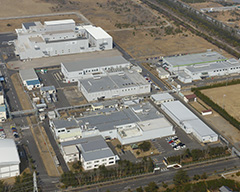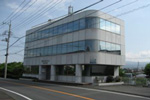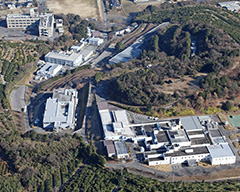
Kashima Laboratory is located in the central area of Kamisu city, which is east of Japan's second largest lake "Kasumigaura" and the southeast end of Ibaraki prefecture. The Kashima Laboratory is situated in the Hasaki area of Kamisu city, which is south of the prefecture's largest Kashima coastal industrial area. To the north is Kashima city, which is famous for its Japanese professional soccer team "Kashima Antlers", and to the south is Choshi city, where the first sunrise in Japan can be seen on the horizon of the Pacific Ocean. Being blessed with a relatively calm climate as it is located between the Pacific Ocean and Tone River, it is cool in the summer and warm in the winter. In the past, access to the Kashima laboratory was inconvenient; but now, frequently operated expressway buses and taxis traveling less than 2 hours between Kamisu city and Tokyo have made access considerably convenient to and from Tokyo.
We provide comprehensive services through our years of experience and expertise in conducting safety studies including general toxicity, immunotoxicity, genotoxicity, and carcinogenicity studies, as well as safety pharmacology, pharmacokinetic, and TK/PK studies, etc., which can all be conducted under respective GLP regulations or reliability criteria at our fully equipped facility.

* Please take a taxi from Choshi Station to Kashima Laboratory (approximately 25 minutes).
* Please take a taxi from Kashima Central Hotel to Kashima Laboratory.
Please get off at the terminal point "ITAKO Interchange" of Higashikanto Expressway and take Route 124.
Please use the map below and drive carefully (approximately 20 minutes).

The Kumamoto Laboratory is located in the hilly area of Uto city in the central area of Kumamoto Prefecture. In spring, nearly two hundred cherry blossoms on the facility grounds bloom all at once.
Since the facility's establishment in 1986, a large number of safety studies in compliance with GLP regulations and pharmacological studies under the reliability criteria have been conducted. In recent years, we have received GLP certification for cellular- and tissue-based products and conducting efficacy evaluation studies of cellular- and tissue-based products using various disease models as well as safety studies such as in vivo and in vitro tumorigenicity studies while taking advantage of the unique characteristics of the Kumamoto Laboratory.
We are also actively taking innovative approaches in the introduction of alternative methods from the viewpoint of animal welfare such as skin irritation testing on cultured skin and in vitro eye irritation testing (BCOP) on isolated bovine corneas instead of on live animals.

* Please take a taxi from Uto Station to Kumamoto Laboratory (approximately 10 minutes).
Please use the map below and drive carefully